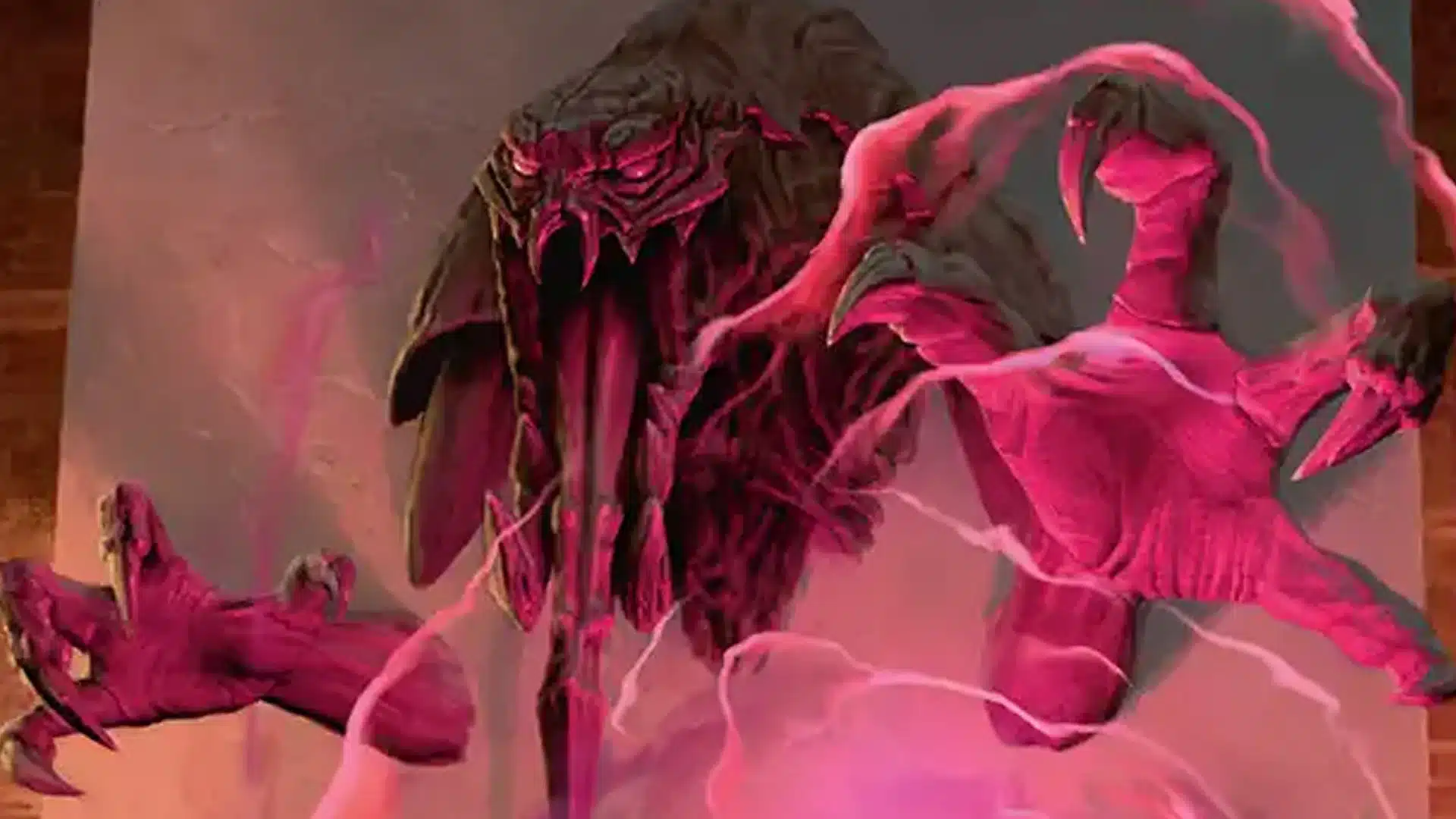Post-ban Standard is here, and over the last 24 hours and counting, we’ve already seen some massive changes to the metagame. Unsurprisingly, Dimir midrange had a fantastic showing in last night’s Magic Online Standard Challenge. Meanwhile, a variety of archetypes once held back by the dominance of Izzet Prowess and Azorius combo, including mono-white token control, made a big splash in the tournament.
These shifts allowed a multitude of unique Final Fantasy cards to flourish. Undoubtedly the most interesting is a two-mana uncommon Defender that looks very unassuming at first glance. With enough support around it, though, the card has already showcased its value and what it can bring to the table.
Demon Wall

The Defender we’re talking about is Demon Wall. This card has quickly proved its worth in Golgari midrange for a number of reasons. By far, the biggest appeal to it is that it’s, in fact, a Demon.
When Rot-Curse Rakshasa was spoiled prior to the release of Tarkir: Dragonstorm, the card received a lot of initial hype as a two-drop Demon that can precede Unholy Annex on curve. Demon Wall provides that same level of upside but can also function as a formidable creature in combat.
A 3/3 for two-mana is no joke, even if it starts out as a blocker. It’s also not difficult at all to get at least one counter on Demon Wall to turn it into a menacing attacker.
There are a number of solid Golgari midrange cards that can get your engine rolling. Innkeeper’s Talent threatens to grow Demon Wall turn after turn. Once Qarsi Revenant dies, Demon Wall is a perfect place to put the array of counters. Even Map tokens from Sentinel of the Nameless City can help get the first counter on your potent two-drop.
Part of what makes Demon Wall so appealing, too, is that it is very resilient. It dodges Cut Down and Go for the Throat, making it a nuisance in the black midrange mirrors. Dimir midrange decks have limited ways to interact with either Demon Wall or Unholy Annex, and the combination of those two cards will run away with the game. This two-drop has a lot of potential moving forward!
Cecil, Dark Knight

Our next Final Fantasy creature that got significantly stronger following the bans is Cecil, Dark Knight. Cecil is an extremely assertive threat at a rather uncontested point on the curve. Early on, Cecil can peck away at the opponent. You do lose life in the process, but the threat of transforming Cecil is real. Of course, if you’re behind later in the game, Cecil serves as a great blocker.
It’s very difficult for the opponent to block Cecil profitably during the first few turns of the game. As such, it’s in your best interest to play cards that punish your opponent for not trying to get Cecil off the table.
For Dimir midrange, Kaito, Bane of Nightmares is obviously your best bet, with Enduring Curiosity not too far behind. For mono-black midrange, Gix, Yawgmoth Praetor is a solid card advantage machine in its own right. Factor in the life loss from Dark Confidant, and you’ll be flipping Cecil in no time.
Dark Confidant

Speaking of Dark Confidant, the strong reprint is starting to make its presence felt in Standard, too. The card advantage you get out of this card is incredible when you’re not at risk of getting beaten to a pulp, and aggro decks took a huge hit from the ban announcement.
Mono-black midrange is an obvious home for the card. Perhaps its most notable appearance, though, was in Orzhov self-bounce. Despite losing Hopeless Nightmare, this Nurturing Pixie shell put up an excellent performance with Tinybones Joins Up as a replacement.
The dynamic duo of Cecil and Dark Confidant made an appearance, with both cards showing up in playsets. What’s nice about this deck as a home for Dark Confidant is that your curve is super low. The only card that costs three or more mana in the maindeck is Preacher of the Schism. This makes the life loss from Dark Confidant less of a liability while also making it easier to relish all of your excess cards in a timely manner.
Yuna, Hope of Spira

Lastly, we wanted to highlight Yuna, Hope of Spira. Nearly immediately following the release of Final Fantasy, many players flocked to Yuna as a neat build-around. Naya enchantments showed some potential, but ultimately struggled to keep up with Izzet Prowess and mono-red aggro.
Much like Insidous Roots decks, these Naya enchantments decks rely on strong synergies. You simply can’t afford to give up too many slots for traditional removal spells.
Now that the format has slowed down significantly, the grindy gameplan of discarding one of your Overlords and reanimating it with Yuna has become a lot more appealing. These decks utilize a wealth of new cards, including Terra, Magical Adept and Joshua, Phoenix’s Dominant as ways to fuel your graveyard.
It’s still very early on in “new” Standard, and there’s plenty of room for innovation. We’re excited to see what other Final Fantasy cards make a splash as players continue to adapt.
Stick with us here at mtgrocks.com: the best site for Magic: The Gathering coverage!
